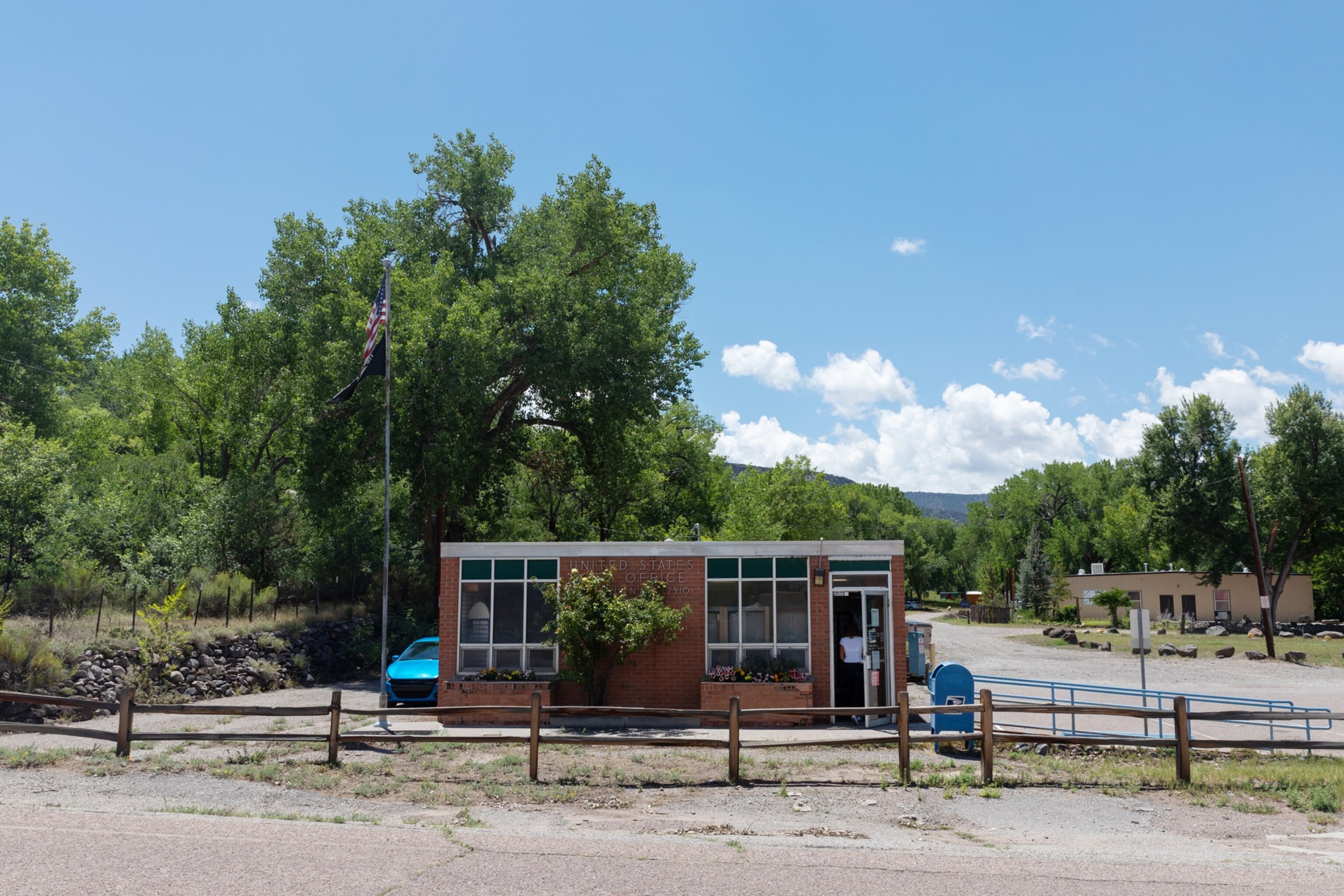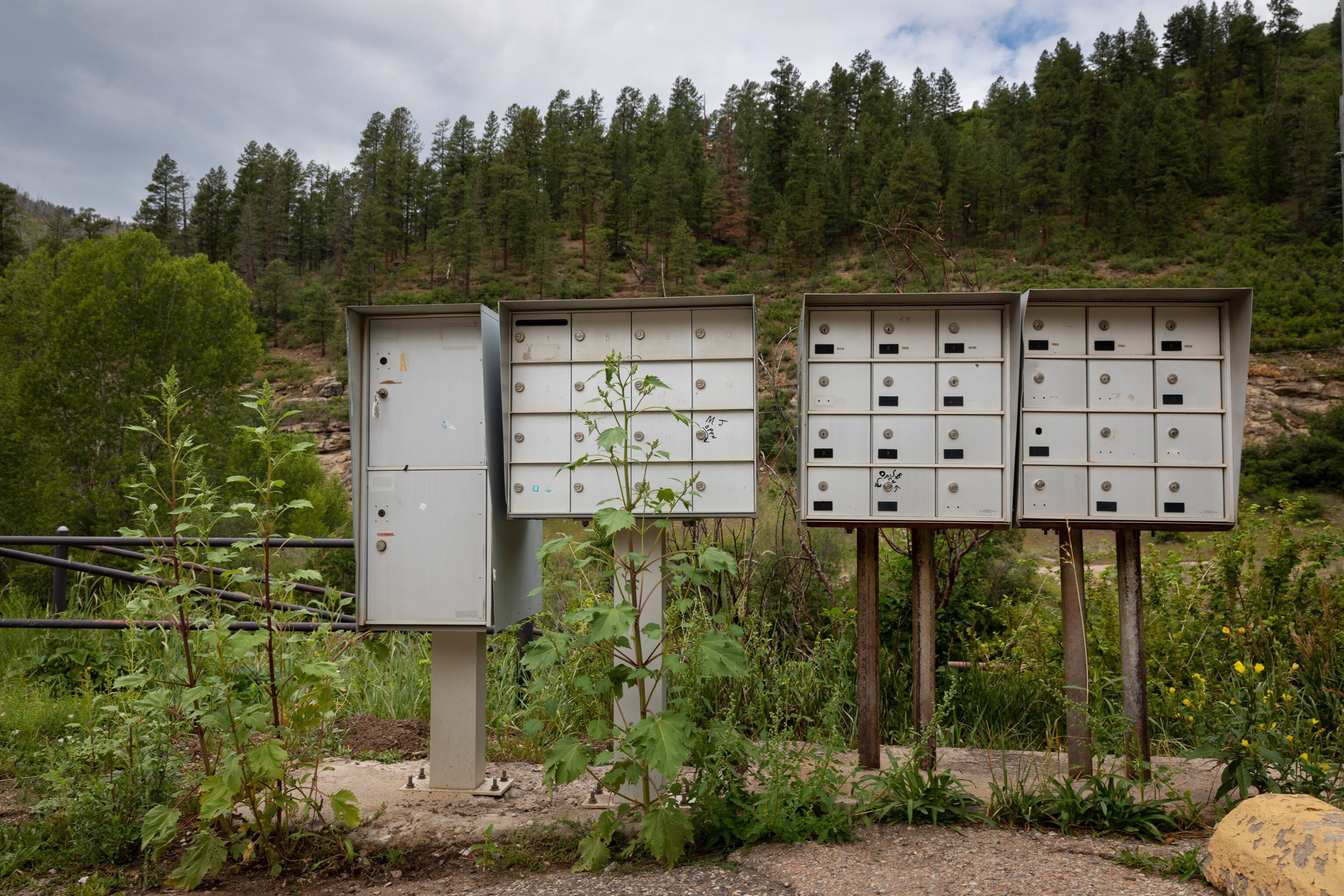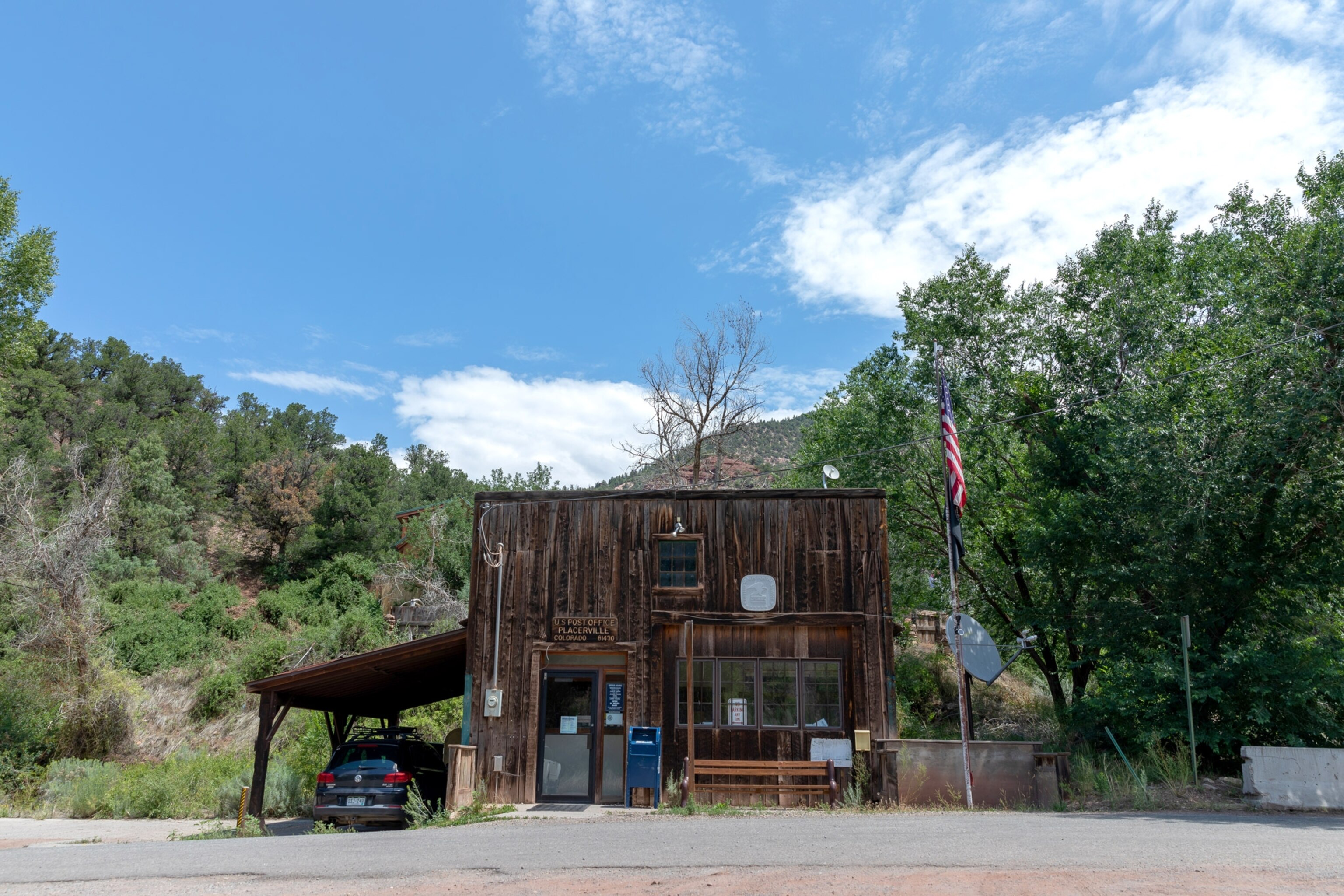America’s postal service is a rural lifeline—and it’s in jeopardy
Rural post offices and mail carriers connect our smallest towns to the world and provide a sense of community. But a burdensome financial structure, and lack of federal aid amid a pandemic, threaten their future.

When I was growing up on a small wheat farm in Kansas, employment by the postal service struck me as venerable. One of my best friends was the daughter of the postmaster in the small town where I attended middle school, and with my limited socioeconomic awareness I viewed their resulting middle-class stability as “rich.” Once I owed my friend a bit of change and for some reason mailed the few coins to her in a stamped envelope. The next time I saw her postmaster father, he shook his head and told me the lumpy envelope had been shredded as it passed through processing equipment intended for flat letters.
Never having seen a mail-sorting machine, I misunderstood his explanation and thought the coins had set off some metal detector that screened for hazardous contents. While I felt embarrassed, the admonition only increased my reverence for the United States Post Office.




I was deeply aware of my family’s vulnerability working in remote fields, construction sites, and factories without adequate pay, health insurance, retirement funds, or sense of belonging to some official institution. Postal work, while physical, difficult, and sometimes perilous, appeared to come with all those basic benefits—plus, I now imagined, cool machines that might keep people safe. Most of my closest family members had suffered major work injuries toiling for industries that placed little value on their lives. The postal service, though, seemed a protective force—for the mail, for mail carriers, for the American people.
Years later, when a college friend dropped other career pursuits and became a postwoman in Wichita, I felt somehow proud to know her and, even, a little pang of envy.
Her job is getting harder, though, and you can track the urbanization—and privatization—of our country through the postal service’s changes and challenges.
An urban people in a rural land
When President George Washington signed into law the Postal Service Act of 1792, thereby establishing the United States Post Office Department, the population was overwhelmingly rural and agricultural. Soon, though, the Industrial Revolution changed our relationship to the land. Today, four out of five Americans live in cities. (This is the tumultuous history of the U.S. Postal Service.)
But while we are a mostly urban people, we are a mostly rural place. Rural areas still cover 97 percent of our geography. From the fertile soils of the Black Belt to the unpaved roads of Native American reservations, from the snow-capped Sangre de Cristo Mountains to the Midwestern prairie that I now see from my window, the United States is not just a country. It’s country.
Amid that vast space is the pervasive miracle of 46 million rural mailboxes.
About 29 percent of all residential and business delivery points served by the USPS are classified as rural. Due to population growth, encroaching cities, and dated boundaries, however, some of those areas are no longer so rustic. It is difficult to quantify how many of the USPS’s almost 80,000 rural routes involve muddy lanes, country highways, and small towns, according to Allan Jones, a labor relations analyst for the National Rural Letter Carriers Association (NRLCA). But they wind across 3.6 million miles of this land.

Those routes can be beautiful drives through our country’s abundant natural treasures, and those small post offices contain beauties of their own: interesting, even grand period architecture, perhaps, but more often the austerity of a simple box, four walls and a roof with a homely sign, efficient and resolute against the elements.
Knowing firsthand the punishing labor of agricultural life, the particular dangers of an isolated location, and the social disadvantages of being rural, I am not one to sentimentalize country life. While bountiful with pleasures, it is not a happy pop-country song about a pickup truck and a young woman in cut-off shorts. It is a reality, rather, where a pickup truck slides off loose gravel and kills the teenage girl driving it, as happened to my high school classmate.
Thus, for the 130,000 mail carriers delivering rural routes, the job looks quite different from that of their city counterparts. The routes are long, in some cases with extensive stretches of driving between stops. Rural mail carriers don’t wear uniforms, and about 38,000 of them drive their own vehicles. Those vehicles often require four-wheel-drive for navigating rough terrain, and carriers frequently work in remote areas. There is an online memorial devoted to rural carriers who have lost their lives on the job—most due to car accidents, but some by medical emergency and even murder.
But rural mail carriers are far more often heroes than they are victims.
‘Almost like their family’
At a small demonstration in support of the postal service last August in Lawrence, Kansas, Lisa Grossman told me that her father, who was a mail carrier in the small township of Slippery Rock, Pennsylvania, heard a woman screaming from her house on his delivery route in the early 1990s. The woman’s husband, unconscious on the floor, had no pulse. Grossman’s father called 911, helped the wife administer CPR, and was credited with saving the husband’s life.
When I posted to social media about the demonstration, Ann Vigola Anderson, also of Lawrence, recalled the postman who delivered mail—including the all-important seed catalogue in winter—to her grandparents’ farm at the southern edge of Topeka when she was a child in the 1950s and ’60s. During the Korean War, her grandmother awaited airmail letters from her son, who was a combat soldier. The mailman did more than deliver such important items, though.




“Many times, he would get out of his vehicle and help push grandpa’s old pickup out of a snow drift, or he would bring orange circus candy that my grandma adored and leave it in her mailbox,” Anderson said.
Pumping a dying man’s chest, pushing trucks out of snow, delighting a worried mother with treats—such feats should not be expected of mail carriers anywhere or anytime, let alone today’s increasingly overworked, underpaid postal workers in rural areas. (These people were famous—and delivered your mail.)
But such feats, and the bonds of trust developed on rural routes, are the most rewarding aspect of the job, according to NRLCA president Ronnie Stutts.
“The rural letter carriers—we connect the world, the country, to a lot of the people out in rural communities,” Stutts said by phone from Louisiana, where he lives and is working through the pandemic. Many rural people have limited or no Internet access, still pay their bills via stamped envelopes, and encounter few people in their day-to-day lives. Their mailboxes thus are not just points of delivery but points of survival and civic belonging. Medications, mortgage statements, advance voting ballots, goods no longer available nearby due to dwindling rural economies—all come by mail.
Stutts, who has worked for the postal service for 45 years, noted that the aging demographics of rural communities mean that mail carriers often keep an eye on seniors, sometimes in communication with adult children who have moved away. Rural carriers consider themselves first responders, he said, adding that they might be tasked with delivering coronavirus-related medications in the near future.
Letters come across his desk every day, Stutts said, about a rural carrier who noticed mail accumulating in a box, found someone fallen and lying on the floor inside their home, and saved their life by getting help.
“We’re almost like their family,” he said.
Universal service
That is precisely how Vigola Anderson referred to the mailman at her childhood home in Topeka.
“Our mailman, when I was a kid, was like part of our family,” Anderson said. “My mom made dill pickles every summer and she always said, ‘Just help yourself.’ We’d hear the garage door raise, and he’d take one out of the stone crock where they were pickling.”
Anderson’s cousin was the post mistress of tiny Maple Hill, Kansas, for decades—“the most important job in town,” she said—and her great uncle ran the Taos, New Mexico, post office in the town’s more rugged days, from the 1930s to the 1950s. (Explore the U.S. Postal Service’s attempt to modernize in 1954.)
The much-discussed financial crisis surrounding the USPS today has unique significance for rural delivery. The essential democratic backbone of the agency—guaranteeing the same postage rate for all Americans, regardless of their location—is not profitable. To maintain their own bottom lines, Amazon, UPS, FedEx and other private delivery companies contract the service for “last mile” delivery to far-flung customers.
In 1970, President Richard Nixon signed the Postal Reorganization Act, abolishing the cabinet-level post-office department and weaning the postal service off federal funding; today, the agency relies on postage sales for revenue. In 2006, a Republican Congress passed the Postal Accountability and Enhancement Act, forcing the USPS to pre-allocate up to 75 years of post-retirement costs—tens of billions of dollars—for its employees. No other agency is required to do so, and many see the rule as an intentional blow to a public function that some corporate lobbyists aim to privatize.

Stutts said that while some rural post offices have been consolidated, efforts to close them altogether have been largely unsuccessful due to public outcry from communities who depend on them.
“A lot of people will say, ‘Look, these post offices in these small, rural communities really are not profitable,’” said Stutts, whose fiancé is a rural mail carrier in Farmerville, Louisiana. “Well, the postal service is not supposed to be profitable. The postal service was created to give service to the American people—universal service.”
That service is in jeopardy. The agency’s burdensome financial structure has led to higher workloads and turnover rates, especially for part-time carriers whose position was created in 2015 and who receive fewer benefits. In just 20 years, from 1999 to 2019, the number of USPS employees plummeted by almost 30 percent, from nearly 900,000 to around 630,000.
The coronavirus pandemic increased package delivery this year, giving the USPS a revenue boost. But it also exacerbated the existing employee shortage, as frontline postal workers exposed to COVID-19 fell ill or were forced to quarantine.
Stutts said that the USPS can’t continue to function without help from Congress—help that it’s not getting.
“President Trump does not like the postal service,” Stutts told me, referring to Trump’s longtime, unfounded allegation that the agency mishandles contracts with Amazon and others. “He said we were a joke, and we got no stimulus money.”
According to Stutts, without major reform and funding increases, the USPS will be out of money by September 2021.
It’s an alarming thought not just for rural people who count on mail carriers but for the carriers themselves. The Postal Service has long provided good jobs for women, people of color, and those without college degrees. The National Association of Rural Letter Carriers does not track racial demographics, but 57 percent of rural mail carriers are female, compared with 40 percent of the agency’s national workforce.
Rural mail abides
What really stirred my admiration for mail carriers when I was a kid, I see now, is that on some deep level I sensed that our missions were similar.
As a girl on a struggling family farm, I already knew I wanted to be a journalist someday, for the civic purpose of disseminating information and creating connections among people and places. Mail carriers, of course, accomplish those same goals by different means.
During the 1990s, when I was in my teens, our farm’s mailing address changed from “Rural Route 1” to a more specific description. While that national reconfiguration of rural addresses was necessary to improve emergency response and other systems, I was vaguely annoyed by the assignment of a house number to our farm and a numerical street name to our dirt road, whose location had been described in more interesting terms for my entire life: “When you see the church west of the blacktop, make a right,” or “Follow the arrow on our eggs sign next to the highway.”
Soon after that street address was assigned, we had to sell the farm. Happily, it’s still a working farm owned by another family. For them, the closest hospital is 20 miles away; the nearby two-room school house closed when I was in middle school, forcing a long bus ride for their children; and small grocery stores within easy proximity shuttered long ago. But the rural mail carrier abides, and so too does the rural post office, the rural mailbox of my youth.




When we spoke, Stutts had just returned from the Lake Charles, Louisiana, area where Hurricane Laura had struck a few weeks prior. He’d gone to check on mail carriers and bring them work essentials such as mosquito spray as they delivered mail through disaster zones. Some carriers lost their homes or left the state, Stutts said, and he had carriers in other areas volunteering to help in their absence.
In some places, though, there was no longer need for a mail carrier, because everything had been destroyed. Stutts recalled the devastation he’d just observed in Cameron, Louisiana, a rural area on the Gulf of Mexico 30 miles east of the Texas border.
“There’s absolutely no mailboxes up,” Stutts said. “Big, huge utility poles were snapped like toothpicks—I mean hundreds, hundreds if not thousands of them, within a 20-mile radius.”
The Cameron post office had operated out of a small metal trailer, which was completely swept away by the storm. The only way you know it was there, Stutts said, is by its blue collection box, still standing amid the debris.
Related Topics
You May Also Like
Go Further
Animals
- Octopuses have a lot of secrets. Can you guess 8 of them?
- Animals
- Feature
Octopuses have a lot of secrets. Can you guess 8 of them? - This biologist and her rescue dog help protect bears in the AndesThis biologist and her rescue dog help protect bears in the Andes
- An octopus invited this writer into her tank—and her secret worldAn octopus invited this writer into her tank—and her secret world
- Peace-loving bonobos are more aggressive than we thoughtPeace-loving bonobos are more aggressive than we thought
Environment
- This ancient society tried to stop El Niño—with child sacrificeThis ancient society tried to stop El Niño—with child sacrifice
- U.S. plans to clean its drinking water. What does that mean?U.S. plans to clean its drinking water. What does that mean?
- Food systems: supporting the triangle of food security, Video Story
- Paid Content
Food systems: supporting the triangle of food security - Will we ever solve the mystery of the Mima mounds?Will we ever solve the mystery of the Mima mounds?
- Are synthetic diamonds really better for the planet?Are synthetic diamonds really better for the planet?
- This year's cherry blossom peak bloom was a warning signThis year's cherry blossom peak bloom was a warning sign
History & Culture
- Strange clues in a Maya temple reveal a fiery political dramaStrange clues in a Maya temple reveal a fiery political drama
- How technology is revealing secrets in these ancient scrollsHow technology is revealing secrets in these ancient scrolls
- Pilgrimages aren’t just spiritual anymore. They’re a workout.Pilgrimages aren’t just spiritual anymore. They’re a workout.
- This ancient society tried to stop El Niño—with child sacrificeThis ancient society tried to stop El Niño—with child sacrifice
- This ancient cure was just revived in a lab. Does it work?This ancient cure was just revived in a lab. Does it work?
- See how ancient Indigenous artists left their markSee how ancient Indigenous artists left their mark
Science
- This 80-foot-long sea monster was the killer whale of its timeThis 80-foot-long sea monster was the killer whale of its time
- Every 80 years, this star appears in the sky—and it’s almost timeEvery 80 years, this star appears in the sky—and it’s almost time
- How do you create your own ‘Blue Zone’? Here are 6 tipsHow do you create your own ‘Blue Zone’? Here are 6 tips
- Why outdoor adventure is important for women as they ageWhy outdoor adventure is important for women as they age
Travel
- Slow-roasted meats and fluffy dumplings in the Czech capitalSlow-roasted meats and fluffy dumplings in the Czech capital
- Want to travel like a local? Sleep in a Mongolian yurt or an Amish farmhouseWant to travel like a local? Sleep in a Mongolian yurt or an Amish farmhouse
- Sharing culinary traditions in the orchard-filled highlands of JordanSharing culinary traditions in the orchard-filled highlands of Jordan







